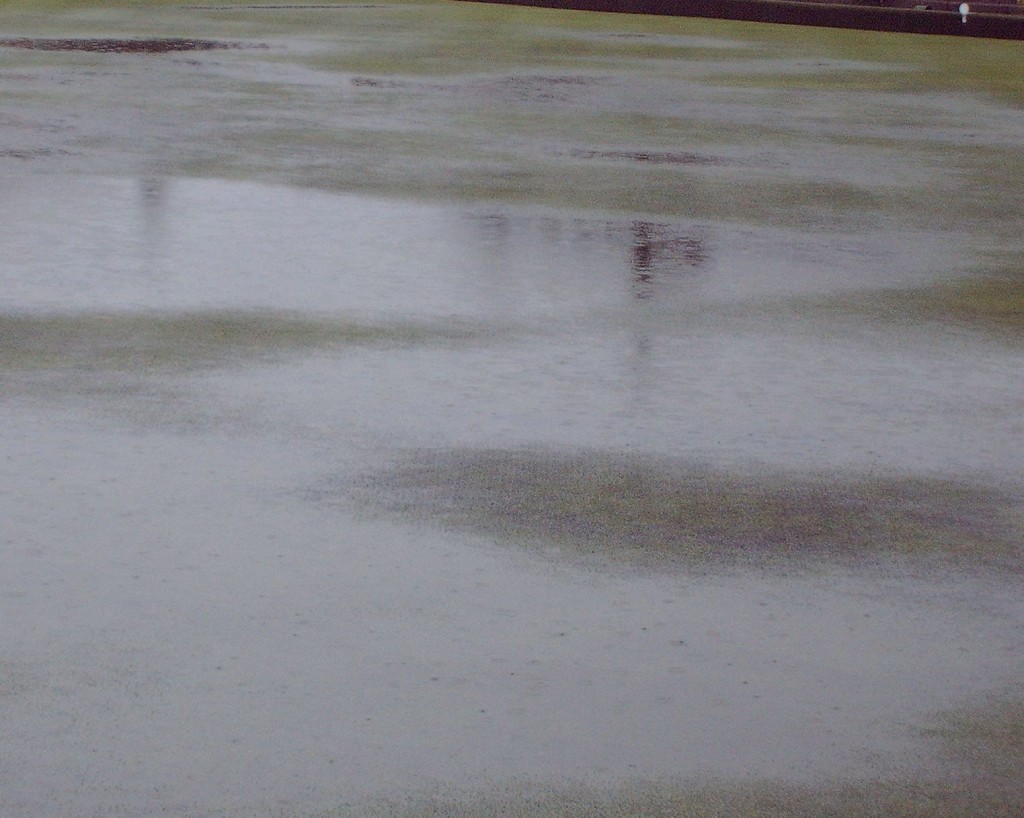I still get incredulous emails and phone calls about my advice to generally stop top-dressing.
In the last 10 years I have only visited one club where I recommended sand top dressing as part of the renovation program and this was due to total neglect and lack of any real maintenance other than cutting and fertilising for a very long time before that. The club in question unfortunately didn’t get as far as implementing the renovation plan and has now been replaced by 4 new family homes!
The top dressing “tradition” has become so ingrained in bowling greenkeeping that it is very difficult for a lot of people to get their heads around it when someone says “don’t do it”.
Here are my top ten reasons not to top dress:
- It makes healthy soil inert and unable to provide plant nutrition
- It encourages thatch build up due to low soil microbe populations
- This saps green speed
- and encourages fungal disease
- It results in Localised Dry Patch (LDP)
- This results in bumpy and uneven surfaces
- It is expensive and unnecessary
- It causes layering and root-break in the turf
- It contributes enormously to the Circle of Decline
- If you keep doing what you’ve always done, don’t be surprised when you keep getting what you’ve always got!
More info on why you shouldn’t be top-dressing here.


Hi John, Can you please advice us on treating a problem shaded area on our green, in that along one side it is shaded by large beech trees with a preservation order on them, so not permited to touch them.
You advice would be most welcolme as we are finding it difficult to maintian grass growth in this area.
Many Thanks
Peter Lowe
Hi Peter
Thanks for your query.
I assume that the trees are along the south side of the green if they are creating a significant shade problem?
However, its likely that they are also absorbing a lot of moisture if they are close to the green edge.
If so and if there is a TPO on the trees, your options are probably limited.
If the soil in the affected area is obviously dry and powdery, you might want to try to ameliorate the soil with a more moisture retentive material like peat. This could be incorporated after hollow tining as a top dressing worked into the holes. Its unlikely that this will have an immediate effect. Granular wetting agents might also afford some relief.
Another option is to create a physical barrier between the tree roots and the green. Doing this as far back from the green as possible but actually on the green edge if there is no other option. This will involve digging a trench, pruning any roots you encounter and inserting a physical root barrier material along the length of the trench on the side of the green that is affected.
Dealing with the shade is another matter and might require some gentle negotiation to see if you can undertake some pruning of the lower branches to let in some more light.
Richard had a similar problem with Cedar trees in this comment stream.
Let me know what you think of this.
Regards
John
Hi John,
Had a Air2g2 machine in this week and what a fantastic job it did, and all for just under £200. Your views on this form of airation please?
Thanks Paul
Looks interesting. Did you go in to 12 inches depth with it?
What were the main benefits you saw?
Interested to hear more about your experience.
Regards
John
Yes full depth. A slight pan at 5 ins hopefully now gone.
What did I see? Pretty much nothing. Will monitor drainage / surface pooling, etc.. Results from nearby golf courses are very encouraging with improved rooting giving the benefits you would expect in better plant health, increased microbiology, less irrigation, etc.
A great piece of kit to use as part of a regime, not a panacea but used a few times year well worthwhile IMHO.
Thanks Paul
Let us know how it pans out and feel free to share links to any results you see from your own or other clubs/golf courses.
Cheers
John